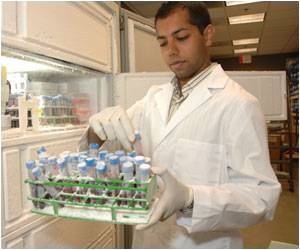Origin of a gene that encodes for protein, HERC5, shown to potentially inhibit HIV discovered.

"Of course HIV and these modern day viruses that we study aren't present in fish, but ancient versions of them are. So what we assume is that as these ancient retroviruses wreaked havoc on marine life, their immune systems had to develop a defense," Barr explained. "We think that one of those defenses is the HERC family. As retroviruses evolved, eventually giving rise to HIV, different variants of HERC genes emerged to combat these infections." Since these viruses have been in battle for so long, they have had time to learn of ways to get around these shields and as a result became smarter. Consequently, this new level of sophistication likely helped these viruses to jump the species barrier and establish new infections in humans.
"By learning the big picture and identifying all the different proteins that can make up this defense against viruses, we can develop a more global approach to advance antiviral drugs. Our future goal is to discover the mechanisms that viruses use to inactivate HERCs and other similar antiviral proteins so that we can exploit this knowledge for the development of novel antiviral drugs," said Barr.
Source-Eurekalert















